Do your interior spaces suffer from excessive echo and reverberation muddying speech and music? Acoustic panels and foam present customizable options to finally tame sound reflections.
Acoustic panels and foam share similarities in sound dampening purpose but differ significantly in core construction, acoustic range, mounting methods and aesthetics.
Let’s dive in to understand key performance factors differentiating acoustic panels vs foam so you can select the right solution matching your acoustic environment and design vision.
What is Acoustic Panels And Acoustic Foam?

Acoustic materials like panels and foam provide customizable sound absorption solutions to tame echo/reverb and reduce unwanted background noise in interior spaces.
The exact acoustic product selected depends on performance needs, budget and desired aesthetics. Grasping key differences helps match the appropriate material to your unique space.
Acoustic Panels
Acoustic panels are made from rigid or semi-rigid materials like fiberglass, wood, plastic, or compressed fibers. They come in a variety of thicknesses, typically ranging from 0.36 to 2 inches.
Acoustic panels allow sound waves to pass through their porous material, converting the sound energy into heat energy in the process. This results in the absorption and damping of the sound.
Acoustic panels are most effective at absorbing mid to high frequency sounds, making them well suited to reducing echoes and reverberation.
The panels can be mounted on walls or ceilings using adhesive, velcro, nails, or wire depending on the weight and design.
Ceiling mounted panels are often suspended on wires while wall panels may feature a wooden frame allowing them to be hung like pictures.
Acoustic Foam
Acoustic foam is made from open-cell polyurethane foam. The foam sheets come in thicknesses ranging from one inch to typically four inches.
Acoustic foam absorbs sound through friction and conversion of velocity as sound waves pass through the open porous structure of the material. This dissipation of energy converts the sound into heat energy.
Acoustic foam is best suited to absorbing high frequency sounds. The foam sheets are applied directly to walls and ceilings using self-adhesive peel and stick backing.
Some adhesive foams also require liquid adhesive applied to the mounting surface before the foam can be fixed in place.
What Are The Key Differences Of Acoustic Panels And Acoustic Foam?
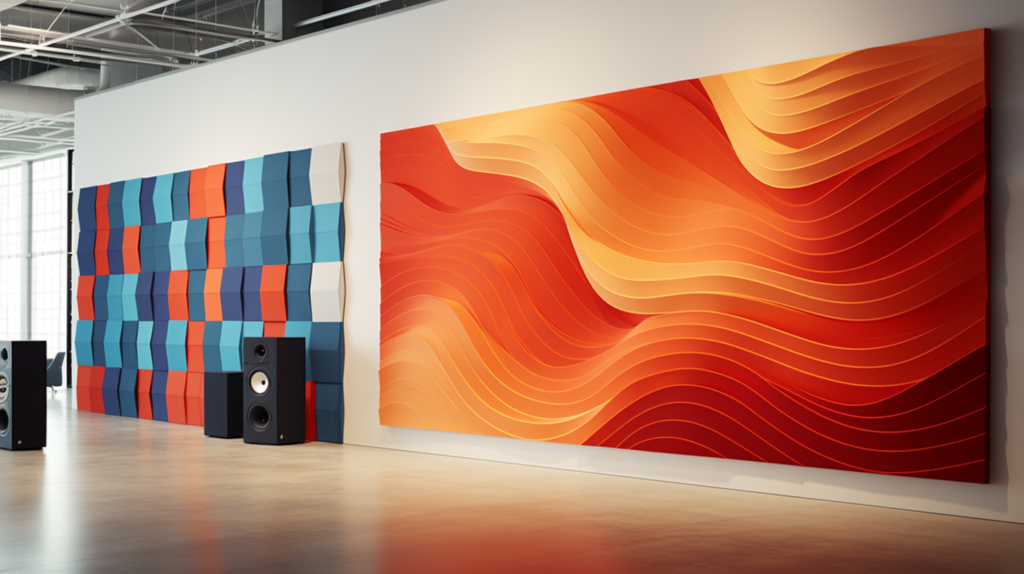
Acoustic panels and acoustic foam provide viable options for absorbing excess sound and improving room acoustics.
Yet key performance attributes differentiate foam from panels relating to acoustic dampening range, application method, appearance, and typical cost.
1. Performance
There is a performance difference between acoustic panels and acoustic foam relating to which frequencies they are most effective at absorbing.
Acoustic panels containing fiberglass or rigid absorbing materials, often with an air gap behind them, work best to absorb medium and some lower frequencies.
Acoustic foam is more limited in the frequency range it absorbs, working best to soak up higher pitched frequencies.
This means acoustic panels generally have higher NRC (Noise Reduction Coefficient) ratings than foam.
The NRC rating denotes the average sound absorption range from 125 Hz to 4,000 Hz. An NRC of 0 indicates no absorption, while 1 is total absorption across that frequency spectrum.
High density foam typically has an NRC rating between .6 and .75. Quality acoustic panels often exceed an NRC rating of .80 or .90 indicating broader sound absorption across frequencies.
2. Application
There is also a significant difference relating to how acoustic panels and acoustic foam are applied within a space.
Acoustic panels come self-standing or mounted to walls and ceilings with specialized hardware suited to their size and weight. Panels can also be suspended from ceilings to allow absorption from all angles.
Acoustic foam relies entirely on peel and stick adhesive backing for attachment directly to wall and ceiling surfaces.
The foam itself is not rigid enough to stand off the surface without support. This limits acoustic foam to flat installations on existing structures only.
3. Appearance
The visual appearance achievable with acoustic panels and foam differs quite significantly. Acoustic panels can be fabric wrapped in almost any color or pattern imaginable allowing for coordination with existing décor.
Custom graphic prints, wood veneers, coloring and shapes provide extensive aesthetic customization capacity.
Because panels do not rely solely on adhesive, they can be rearranged or replaced during renovations.
Acoustic foam is manufactured in a range of monochromatic colors but the spongy cellular visual quality remains present.
Complex patterns and prints are not really achievable with foam. Once installed using adhesive foam is not meant to be removed or relocated as it will damage the surface behind potentially requiring repairs and touch ups when removed.
4. Cost
There is often a significant cost difference when comparing acoustic foam and panels. Pre-fabricated foam sheets sized to tile walls and ceilings are readily available from arts & craft stores for budget friendly projects.
Using foam is a fast and easy acoustic upgrade that is removable. However, the performance Capacity remains limited compared to panels.
Professionally fabricated custom acoustic panels deliver superior sound absorption across a wider frequency range but come with a higher price tag.
The custom sizing, materials, construction and installation associated with panel systems inputs more labor costs compared to foam.
However, professional panels deliver on performance while maintaining strong aesthetics.
What Are The Difference In Materials Of Acoustic Panels And Acoustic Foam?
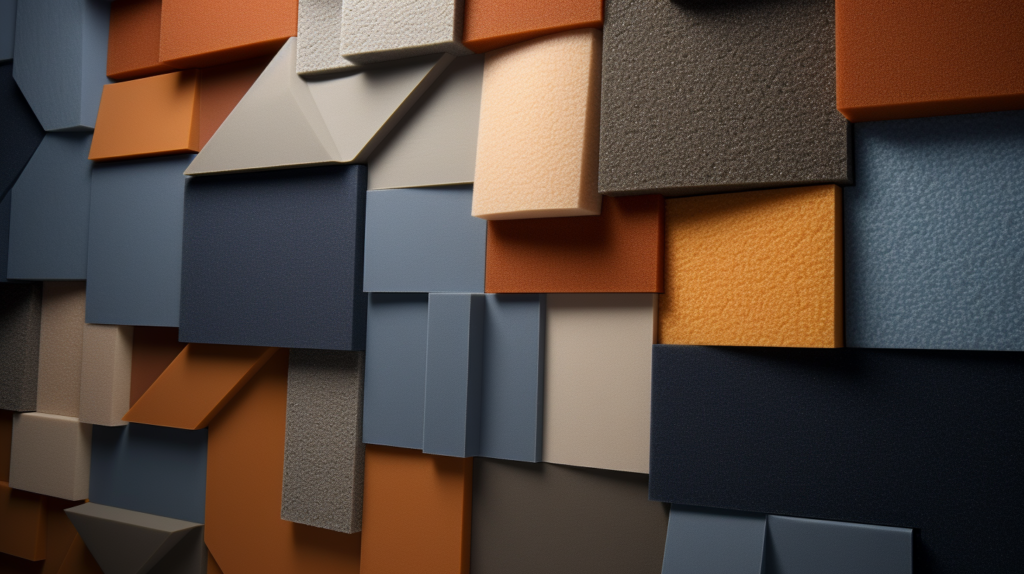
The core materials used to construct acoustic panels and foam differ significantly impacting overall acoustic performance capacity and project costs.
Acoustic panels utilize fiberglass, mineral wool or pressed fiberboards to absorb broader sound frequency ranges.
Foam relies on open-cell polyurethane or melamine foam to primarily capture high frequency reflections. Material density factors into acoustic dampening breadth.
Acoustic Panels
There are a few common material options on the interior construction of acoustic panels that impact performance and cost factors.
Fiberglass
Fiberglass is a common and affordable core material used inside acoustic panels.
The semi-rigid fiberglass boards feature gaps between the fibers that allow sound waves to pass through and become trapped.
Fiberglass offers great broadband absorption, especially in thicker 2-3 inch panels with air gaps behind. One downside is that fiberglass can be irritable to work around during fabric wrapping stages necessitating masks and gloves.
Mineral Wool
Mineral wool like rockwool or slagwool features similar acoustic properties as fiberglass but without associated health hazards.
Comprised of natural materials spun into fibers then formed into boards, mineral is safe for installers to work with.
It delivers excellent sound damping across frequencies. However, costs for mineral wool panels tend to be higher than fiberglass.
Heat-Pressed Polyester Fiber
Heat-pressed polyester fiber presents a cost-effective acoustic panel core. Polyester fibers are heated and compressed into rigid or semi-rigid panels using precise pressure and temperature control.
This fuses the fibers together into boards or shapes with consistent density able to trap sound waves.
The heat-press process creates an even fiber distribution featuring small gaps and pathways for permeating sound to become absorbed and converted to negligible heat energy.
Acoustic panels can contain layered fiber densities for improved acoustic range. An air gap placed behind heat-pressed polyester further widens dampening capacity through the lower frequencies.
Acoustic Foam Materials
There are a couple different foam varieties used to manufacture acoustic foam products impacting factors like price, longevity and performance.
Polyurethane Foam
The vast majority of acoustic foam sheets and tiles are made using polyurethane foam. It features an open porous cell structure allowing sound waves to penetrate the material and become trapped.
Higher density polyurethane foam typically improves acoustic absorption capacity in the high frequency ranges.
Polyurethane foam cost varies based on density rating with higher grades coming with a higher price tag.
Melamine Foam
Melamine foam features a foam structure more reminiscent of bubbles rather than small cells. This opens airflow while allowing the material to retain some rigidity.
Melamine acoustic foam maintains excellent sound absorption, especially in the high frequency ranges.
Out of standard foam varieties, melamine foam delivers better NRC ratings nearing mineral wool panels.
However, it also comes with a higher cost in most cases.
Factors Impacting Acoustic Performance
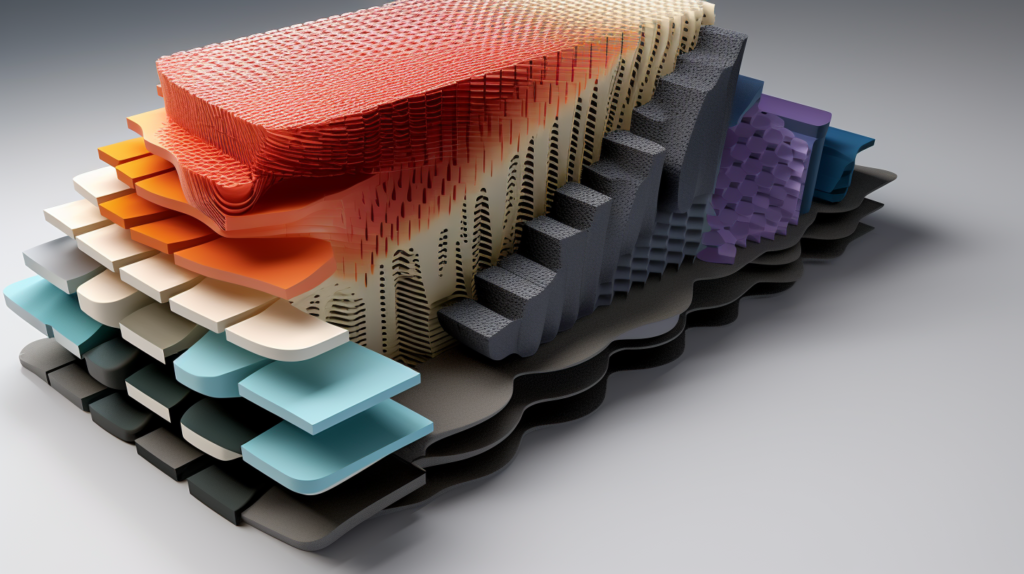
Beyond just the core material chosen, acousticians utilize other design factors to improve the noise control capacity of panels and foam.
Thickness
Increasing the thickness of acoustic foam and panels improves low-end absorption as sound waves must penetrate deeper through materials.
Budget minded projects may utilize 1” foam and panels, but thickness from 2” and beyond improves damping across a wider spectrum.
Acoustic panel assemblies combining high and low density cores also maximize acoustic range.
Air Space
Placing any material a short distance away from the mounting surface leaves an air space behind allowing sound waves to bounce between layers.
This air cavity acts as a bass trap amplifying absorption intensity. Panels often mount using spacers and standoffs to create rear air gaps. Increasing gap depth enhances lower frequency damping.
Layering
Layering varied acoustic materials together as assemblies boosts acoustic range. Panels frequently consist of a fiberglass board core plus an air gap and fabric finish.
Foam sheets sometimes adhere to existing wall finishes combining absorption between layers. Combining foam and panels in a room brings high and mid-range control.
Coverage
The quantity and coverage ratio of acoustic materials installed impacts effectiveness. Concentrating panels or foam at the front wall and mixing types across other surfaces increases control.
Matching 80%+ coverage ratios reaches optimal reverberation and echo reduction. Full surface treatments prevent distinct reflections and absorb sound from all angles.
How Much Absorption Do You Need?
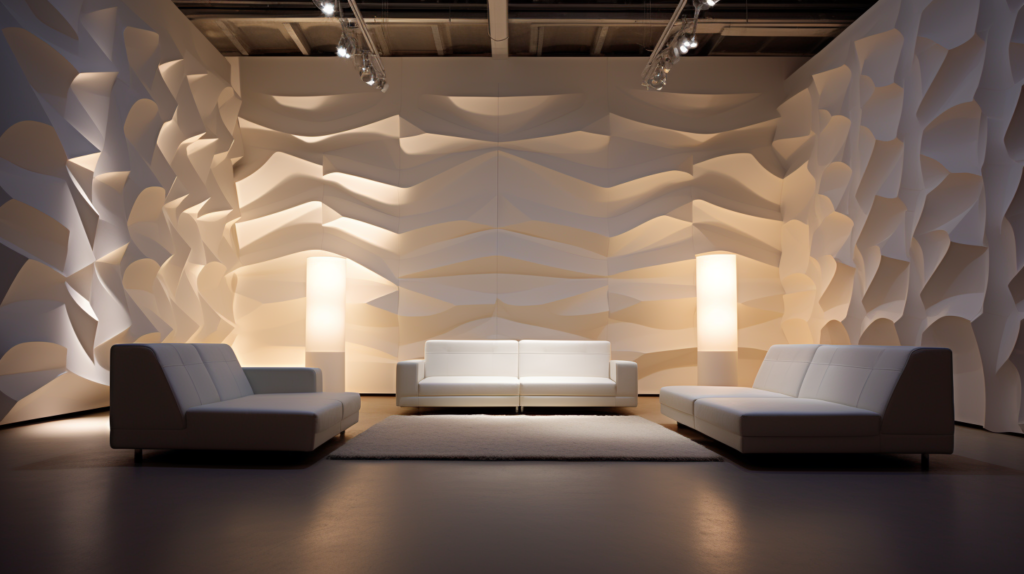
Determining how much acoustic foam or how many panels requires calculations balancing room dimensions with sound control goals and budget. Guidance approximates needing:
Acoustic Foam: Cover 25% of room surfaces to limit reverberation or 50%+ for voice and music clarity.
Acoustic Panels: Cover 35% of combined room surfaces for significant control or 65%+ for professional studio levels.
However, each space differs in exact needs based on volume, usage and noise problems experienced.
Acoustical software that models a room and material choices aids precision placement and budgets to achieve preferred sound quality without overspending.
What’s Best For Your Acoustic Needs?
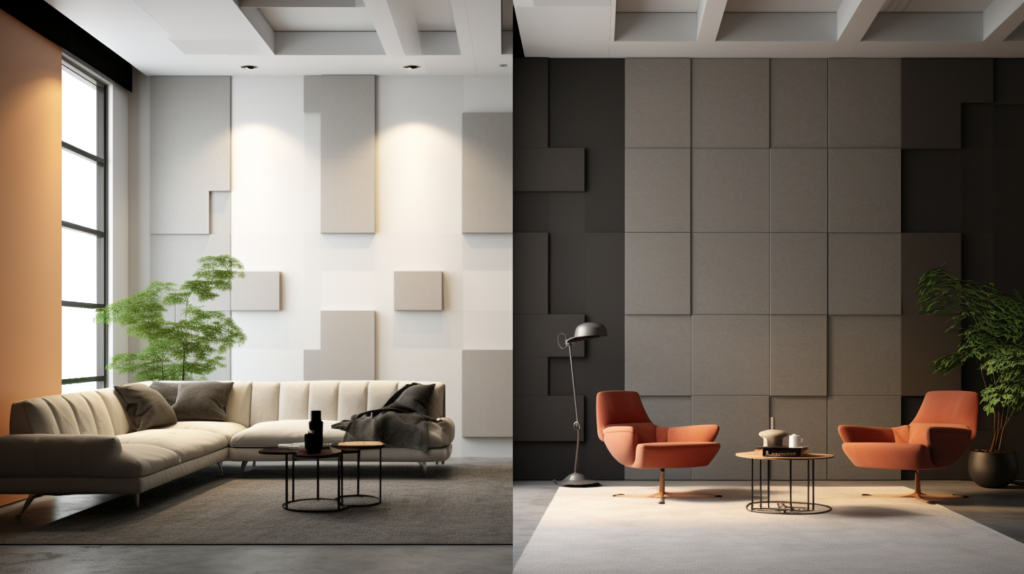
Deciding between acoustic panels vs foam depends primarily on your performance expectations, aesthetic preferences, installation goals and budget.
Acoustic foam makes an excellent budget friendly first step delivering some sound dampening suited well for home studios or offices.
Custom designed and engineered acoustic panels offer superior acoustic control across the complete spectrum.
Ideal for professional spaces or restaurants/venues hosting live music with higher expectations.
Though at increased cost, panels maximize flexibility in placement/finishes allowing adaption alongside evolving space uses and fresh style updates.
Determine your top priorities between cost, efficiency, aesthetics and adjustability when selecting the optimal acoustic materials for tuning your interior sound.
Mix foam and panels together if desired to balance benefits. Just ensure whichever route you take addresses your core acoustic, functionality and design needs now plus into the future.
Conclusion
Both acoustic panels and foam offer viable sound absorption solutions with tradeoffs in performance, aesthetics and budget.
Determine your exact acoustic and design needs, then select the appropriate product or combination that best fits within spatial, functional and financial constraints.
Balancing acoustic panels and foam can provide comprehensive noise control elevating functionality alongside style.
